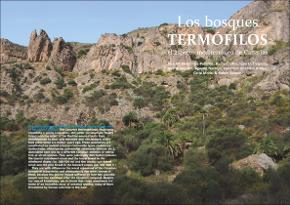Los bosques termófilos: el aspecto mediterráneo de Canarias
Fecha
2011Resumen
The thermophilous woodlands. The Mediterranean appearance
of the Canary Islands. The Canarian thermophilous woodlands
constitute a young ecosystem, still under construction, closely
linked with the onset of the Mediterranean climate type,
characterized by their arid summers and wet winters, which
took place some 2.5 million years ago. These woodlands are
constituted by several arboreal community types (sabinares,
acebuchales, almacigares, palmerales, retamares blancos, etc.),
dominated each one by a different Canarian endemic or native
tree or shrub species. They were potentially distributed between
the coastal sub-desert scrub and the laurel forest in the
windward slopes (ca. 200-500 m) and the coastal sub-desert
scrub and the pine forest in the leeward slopes (ca. 300-900 m).
They are with difference the worst conserved of the Canarian
terrestrial ecosystems and consequently the worst known of
them, because the severe impact suffered by both the guanche
people and the Castilians after the Canarian conquest. Despite
our lack of knowledge, we do know that these woodlands are
home of an incredible array of endemic species, many of them
threatened by human activities in the past.






